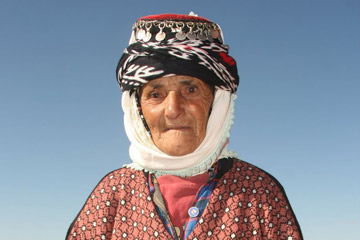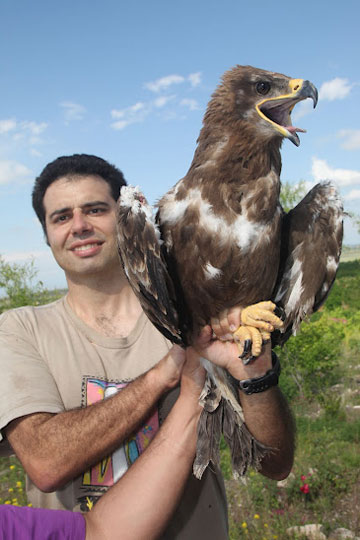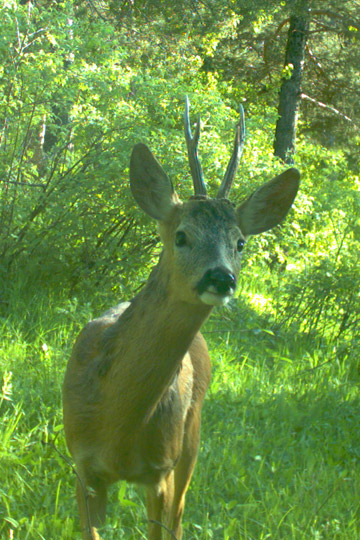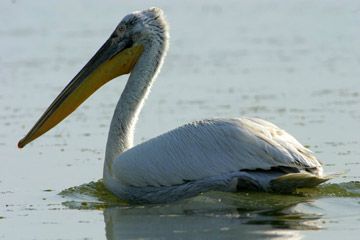- Home >
- Our Actions >
- Ambassador report
3
Comments
Turkey rich biodiversity at risk |
|||||||||
|---|---|---|---|---|---|---|---|---|---|
|
"The current 'developmentalist obsession,' particularly regarding water use, threatens to eliminate much of what remains, while forcing large-scale migration from rural areas to the cities. According to current plans, Turkey's rivers and streams will be dammed with almost 4,000 dams, diversions, and hydroelectric power plants for power, irrigation, and drinking water by 2023," the authors write, adding that other threats include urbanization, wetland-draining, and poaching.
Turkey is also a hugely important bird country with nearly 500 species identified so far. "Turkey lies at the intersection of globally important bird migration flyways. It has the highest number of breeding bird species in the Europe, but also the highest number of threatened bird species in Europe," co-author Cagan Sekercioglu, a Turkish ornithologist and ecologist, with the University of Utah, told mongabay.com. "Few people realize that the famous Rift Valley bird migration over Israel and into Africa, and the Rift Valley itself, begin in Turkey. Bird species of traditional farms are declining fastest in Europe but can still be found in large numbers in the bioculturally diverse rural communities of Turkey, particularly in the east. Among others, Turkey hosts globally important breeding populations of threatened white-headed ducks, Egyptian vultures, sakers, great bustards, and imperial eagles, and is a key stopover site for declining migratory bird species like sociable plovers." But all of Turkey's remaining species are facing threats. In 2012, the bottom 8 percent for its biodiversity and habitat conservation efforts, putting Turkey in the same category as some of the world?s most troubled and impoverished countries, such as Haiti, Libya, Eritrea, and Iraq. But scientists warn that recent policy efforts could push Turkey, which is working to become an economic powerhouse, even lower.
Loose laws, poor enforcement, and little public oversight has created a situation whereby the Turkish government is capable of steamrolling any environmental concerns. "The government, practically unopposed, easily modifies existing laws and passes new ones to remove any environmental obstacles to the construction of dams, mines, factories, roads, bridges, housing projects, and tourism developments. Such construction increasingly occurs in 'protected' areas, often at the expense of local people," the authors write. While Turkey has an impressive array of 1,261 protected natural sites, many of these are very small, leaving only 5.1 percent of Turkey's land under protection as opposed to the global percentage of about 13 percent. In addition, 1.2 percent of Turkey's land is under strict protection. Now, even some "strictly" protected areas, including wildlife reserves and national parks, are coming under assault: mining and dam-building are allowed in a number of parks, and Turkey is now conducting a legislative review of every one of its strictly protected natural areas, known as SIT sites. "We anticipate that many of these protected areas, some of which now impede dam construction and other development projects, will not survive what will likely be a biased review process," reads the letter, which notes that there is an "increasing arbitrariness in environmental policy, where economic development has trumped all other concerns." The government structure set-up to manage the nation's parks also concerns conservationists.
Another issue in Turkey, according to the researchers, is simply that the public that doesn't rate environmental and conservation issues very highly. "Turkey's citizens do appreciate nature, as evidenced by the popularity of picnicking and hunting, but the general lack of awareness about environmental issues and the absence of a strong conservation ethic prevents large-scale support for conservation," the researchers write. Sekercioglu sees a number of places for concern about Turkish society's comprehension of environmental problems: "According to a recent survey, only 1.3% of Turkey?s citizens see environmental issues as a major concern. Environmental charities in Turkey receive little support and for most wealthy citizens, contributing to environmental conservation is not a priority. No university in Turkey has a department of ecology or conservation biology, and limited environmental education in the country perpetuates the lack of environmental awareness. Most of the public are not aware of the value of a healthy, well-functioning environment for human well-being and prosperity. However, increasing concern for climate change is slowly leading to a broader awareness of other environmental issues." In fact, Yale's overall Environmental Performance index (EPI) ranked Turkey as 109 out of 132 countries this year, among what the EPI refers to as "weaker performers". Instead of improving, Turkey's environmental measures are declining: the country fell 32 spots since 2010. "For a country whose economy is ranked as one of the top ten economies in the world, this failure to protect its natural heritage is embarrassing. This index shows again that global measures of development should not be solely based on monetary measures such as GDP, financial wealth, construction or dams," Sekercioglu says in a press release. But not all conservation news out of Turkey is bleak. The nation has just announced the establishment of its first wildlife corridor in the Kars region. "Kars is reminiscent of Montana, Wyoming or Colorado in its climate, vegetation, and beautiful scenery consisting of mountains, wetlands, rivers, fields, meadows, and pine forests.
Running for nearly 51 miles (82 kilometers) and covering 23,500 hectares of forest, the corridor will help a number of big carnivores, including bears, wolves, and lynx. The corridor has been pushed for four years by Kuzey Doga, of which Sekercioglu is president. The organization, in collaboration with Turkey?s General Directorate of Nature Conservation and National Parks (GDNCNP), have conducted camera trap surveys of the wildlife in the region since 2006 and have begun the first tracking study of Turkey?s wolves. "This is the biggest landscape-scale active conservation project ever to be undertaken in Turkey," Sekercioglu says. "Our research since 2006 has shown the isolated Sarikamis-Allahuekber National Park to hold critical, breeding populations of brown bears, wolves, lynx and wild cats. However, this park is only 230 square kilometers whereas the wolves we tracked covered over 3000 square kilometers in only 3 months. In addition, only a quarter of the park is forest, whereas most of the old-growth forest is outside the park and is actively logged by public and private entities. The corridor will more than double the area of the national park and will connect the important populations of these large, keystone carnivores to the much larger forests and carnivore populations in the Caucasus mountains of northeastern Turkey and neighboring Georgia. By extending all the way to Georgia?s forests, the corridor will also promote transboundary conservation in the region. We also hope that the corridor will draw attention to the region?s rich wildlife, publicize the biocultural diversity of northeastern Turkey, and increase village-based wildlife tourism in the Kars region." The success of the corridor may point one way forward for burgeoning conservation efforts to safeguard Turkey?s long neglected, but stunning biodiversity. |
|||||||||
|
|
|||||||||














 Previous : Bangladesh wins the Earth Care...
Previous : Bangladesh wins the Earth Care...









3 Comments
I guess this article is written by the reporter ^( Please do not copy and paste, instead you can link this article and add your own opinion on this. Will you try?
Posted 17-10-2012 11:43
This is very informative article. Great work!
What is the exact name of the book you read?
Because I've been in Turkey 1 and half year so I am interested.
Posted 17-10-2012 10:41
informative report, thanks for sharing this.
Posted 17-10-2012 07:44